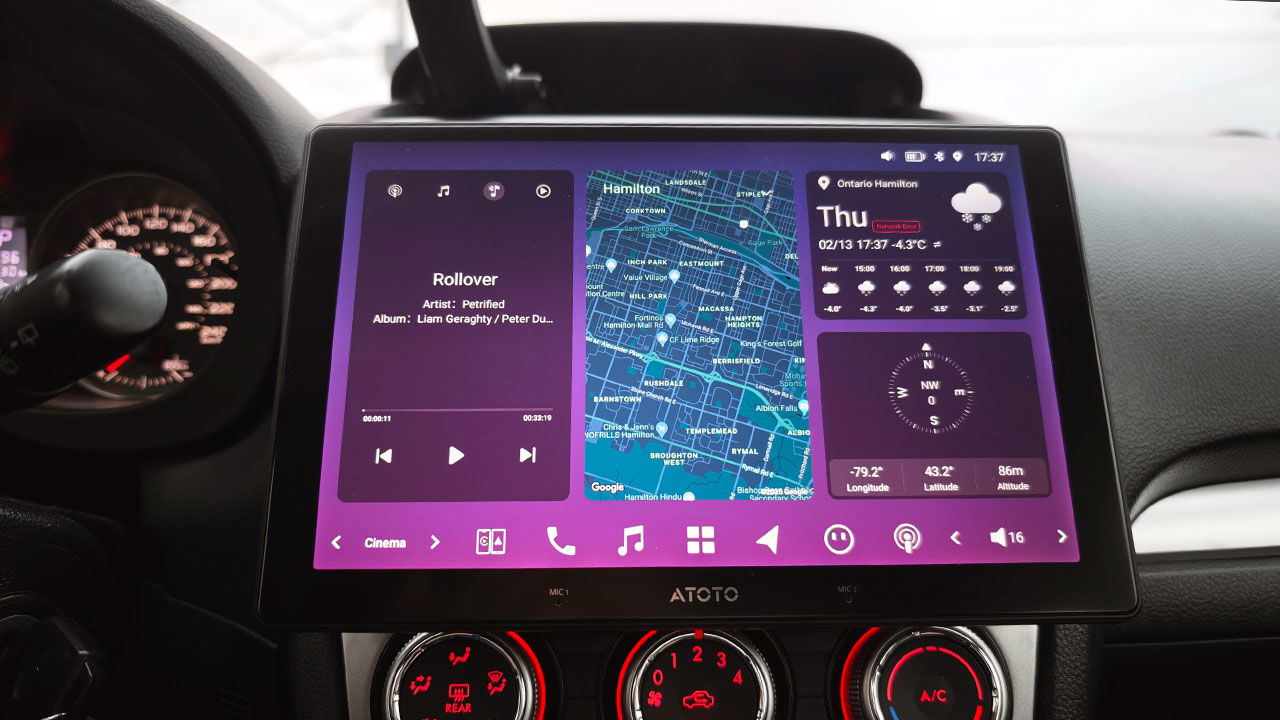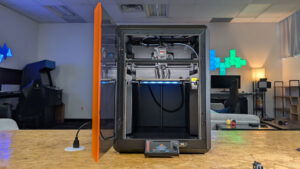I was a fan of the ATOTO S8 Ultra when I reviewed it last year. It offered a solid replacement for anyone needing a more modern way to listen to music or podcasts in the car and sounded surprisingly good for the price. Now, ATOTO has a new head unit, the X10, and on paper, it brings a host of new features to the table.
While its price tag is on par with many premium automotive infotainment systems, the ATOTO X10 aims to bridge the gap between high-end OEM installations and more budget-friendly aftermarket solutions. After spending a few weeks with the ATOTO X10, I have to say it is an impressively capable unit, and beyond some minor hiccups early on, it is easily one of the best Android-based systems I have tested to date.
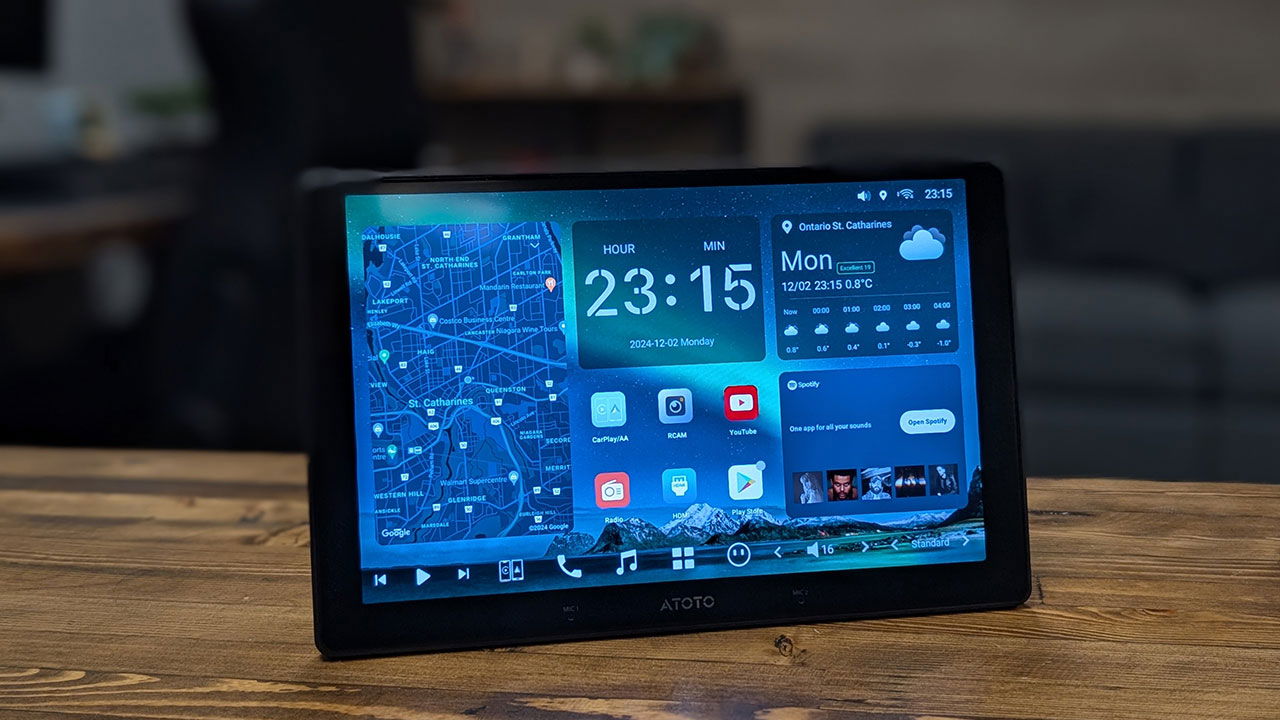
In attempting to create a single-head unit that appeals to both advanced and casual users, ATOTO has taken on a considerable task. The X10 offers a broad range of customization capabilities and built-in apps that rival what you might find on a dedicated tablet. One of its most notable additions is DriveChat, an onboard chatbot powered by AI that assists drivers with voice commands and queries, helping them stay more engaged on the road and less distracted by handheld devices.
This fusion of connectivity and entertainment is one of the X10’s main selling points. But as innovative as DriveChat might sound on paper, its real-world functionality must work seamlessly alongside all the other features car owners expect in a modern multimedia system.
“…the ATOTO X10 aims to bridge the gap between high-end OEM installations and more budget-friendly aftermarket solutions.”
From the moment you open the box, the ATOTO X10 aims to impress. While final shipping contents may vary by market, the core experience remains consistent: a high-definition touchscreen available in 7-, 9- or 10-inch sizes, a rear wiring harness that accommodates everything from steering-wheel buttons to external DVR cameras, and a chassis that fits most double-DIN mounts with minimal fuss. The screen is bright and well-saturated, offering sharp visuals for maps and videos alike. The user interface runs on Android 13, which is a crucial step forward from earlier versions, providing improved security updates, better app management, refined multitasking capabilities, and a striking visual experience compared to many alternatives on the market.

Thanks to the more modern operating system, the X10 can install a variety of apps directly from the Google Play Store. While many Android head units offer this ability, what sets the X10 apart is how smoothly everything runs, thanks to its octa-core Snapdragon 6125 processor, 8 GB of RAM, and 128 GB of onboard storage. The interface feels responsive and snappy—more in line with a mid-level Android tablet rather than the sluggish experience typical of many underpowered car stereos.
The device’s core functions—music playback, navigation, and phone calls—are all handled well. The ATOTO X10 supports both wireless Apple CarPlay and wireless Android Auto, ensuring seamless media streaming and phone integration without cables. Calls come through clearly, although sound quality depends on the rest of the vehicle’s audio system. The built-in amplifier is rated at 4×49 W, with a continuous RMS rating of 4×29 W—respectable enough to power most standard car speakers.
“The ATOTO X10 supports both wireless Apple CarPlay and wireless Android Auto…”
However, audiophiles looking for high-fidelity sound may opt to pair the X10’s digital output with an external amplifier. The inclusion of an SPDIF port reduces the risk of noise interference compared to older analog RCA connections. For those wanting to push audio performance further, an external amplifier remains an option, though for most users seeking a modernized audio interface, this may be overkill. When tested in a midsize sedan, the bass was strong and well-defined, and the midrange carried enough clarity to differentiate instruments, provided the equalizer was properly configured.
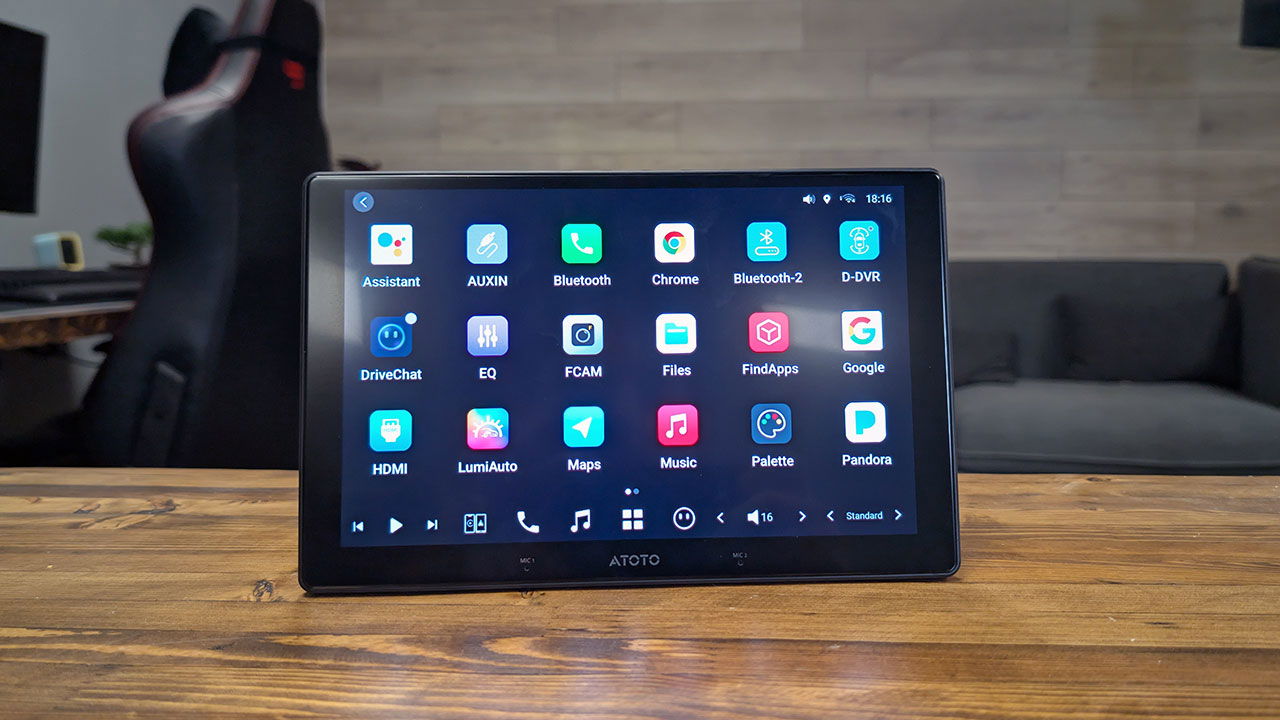
This, of course, is another area where the ATOTO X10 shines: a highly adjustable set of audio controls. Within the system’s equalizer menu, users can fine-tune the sound down to precise frequency bands. Each band can be adjusted independently, or users can select preset sound profiles such as Rock, Soft, or other popular modes. The system even supports more sophisticated manipulations, including adjusting the phase angle, time alignment, and reverb effects, allowing users to tailor the audio for the driver, passenger, or full-cabin listening positions. It is a robust system that makes setting the audio to personal preference easy, with preset options always accessible at the bottom left of the screen for quick adjustments on the fly.
Beyond its audio features, the X10 demonstrates a strong focus on safety, with support for multiple camera inputs and a real-time camera feed. ATOTO sells optional front- and rear-view cameras, which the X10 can display on demand. Users can also install their own cameras, provided they are compatible with the X10’s connectors. The system is capable of toggling automatically when the driver shifts into reverse, displaying a clear, wide-angle image of the surroundings.
Some owners have also used a front camera for parking in tight spaces. This real-time video feed helps mitigate blind spots, turning a security and convenience feature into part of the system’s everyday utility. In our testing, the system worked flawlessly with the car’s built-in reverse camera and an additional front camera. The interface makes adjustments simple, taking only a few minutes to configure everything to the user’s preference.
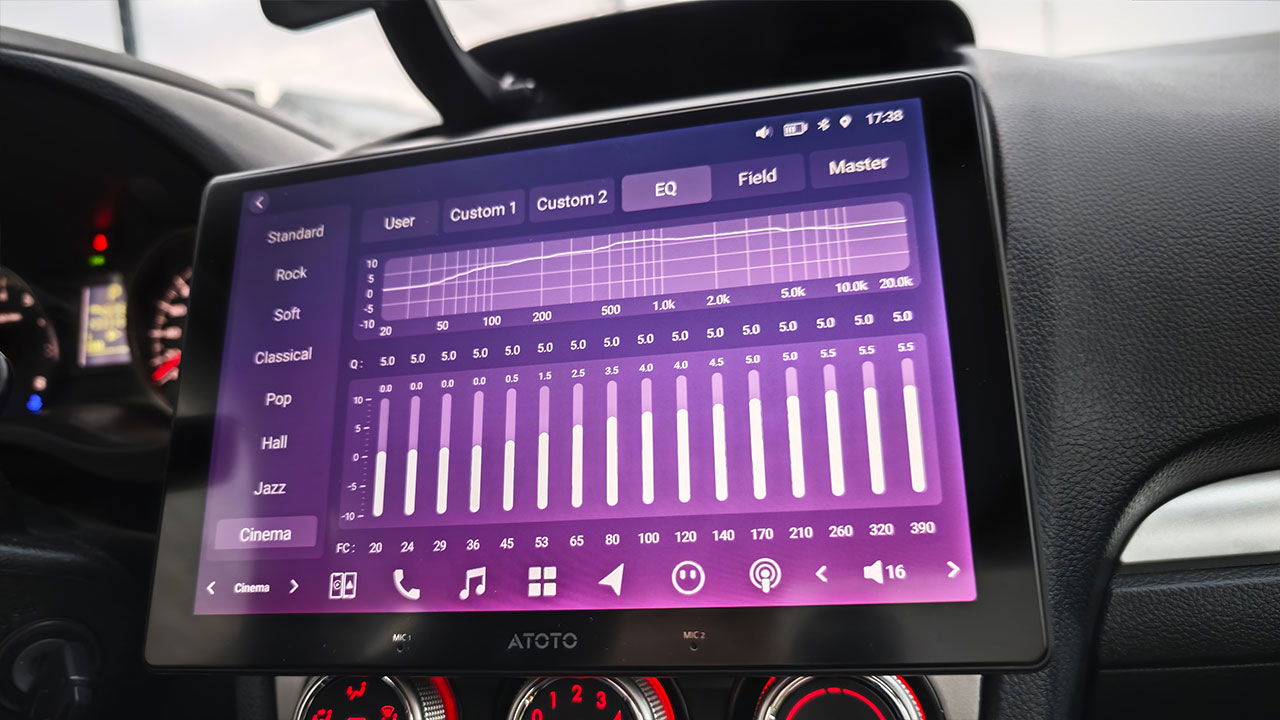
ATOTO has also streamlined the update process, eliminating many of the struggles found in past head units. Rather than requiring complicated firmware download procedures, the X10 includes an over-the-air update mechanism if an internet connection is established. Adding a smartphone hotspot or inserting a compatible SIM card is straightforward and enables the head unit to check online for new software. This ease of updates reinforces the sense that ATOTO is committed to refining and patching minor software issues as they arise, ensuring the system remains modern and evolves with new features as they become available.
Another area where the X10 differentiates itself is its multi-Bluetooth functionality. Unlike many head units that allow only one phone to connect via Bluetooth at a time, the X10 can pair two phones simultaneously. It can feel a bit jarring at first if you’re used to systems that disconnect one device when a new audio source is connected, but once past the initial surprise, it proves to be a useful addition—especially for road trips where one device handles maps while another plays audio.
Passengers may also appreciate the ability to take hands-free calls from either of the synced devices. For additional connectivity, the X10 includes a Bluetooth 2 menu designed for pairing accessories, such as keyboards or scanning tools, separate from the phone-specific Bluetooth interface. The connection process is as seamless as pairing a standard phone or tablet, making it feel intuitive.
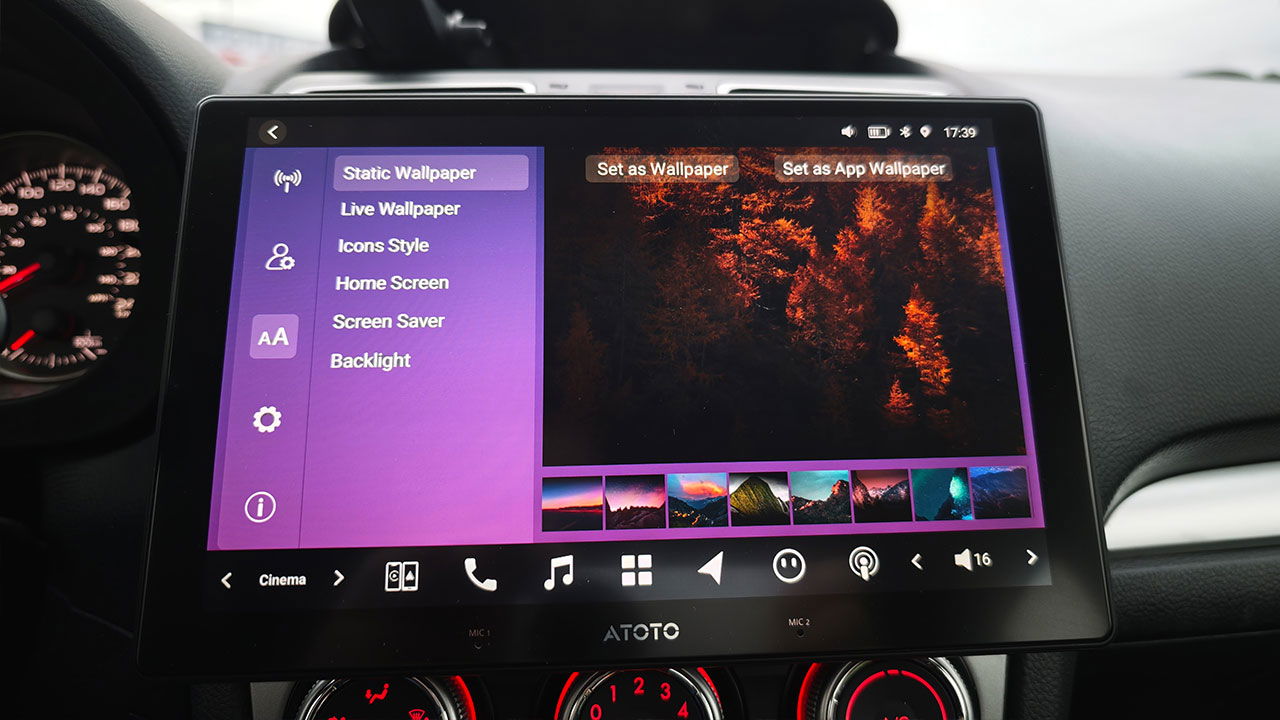
Despite the X10’s many strengths, there are minor hitches to consider, at least from my experience testing the unit. Some parts of the interface were not translated as expected, leading to confusing errors when they appeared. After speaking with support, we worked out the issue, but it was frustrating to encounter an error message with no clear instructions on what was wrong or how to fix it. I also ran into an issue with steering wheel controls not working as expected with the wiring harness, despite the same harness functioning correctly on other ATOTO units. While not a deal-breaker, it’s worth noting for those planning to integrate the X10 with their existing controls.
The X10 interface allows for significant customization of its home screen. Users can freely move icons and widgets, such as an analog or digital clock, weather forecasts, or shortcuts to favourite apps like Spotify and Google Maps. The multi-layered menu structure can be organized for quick access to submenus such as Bluetooth, radio, or the native MP3 player. For those who prefer a more streamlined experience, default presets are available to automatically arrange icons in a clean and organized layout.
For aesthetic personalization, the Palette tool allows users to change the background colours of the interface to match branding, personal preferences, or the car’s interior lighting scheme. The system also mentions “Lumi Auto,” a kit that syncs decorative LED lighting in the vehicle to change colours or pulse in rhythm with the music. While arguably more of a novelty, it further highlights ATOTO’s effort to position the X10 as an all-in-one entertainment hub rather than just a screen for processing a phone’s CarPlay or Android Auto feed.
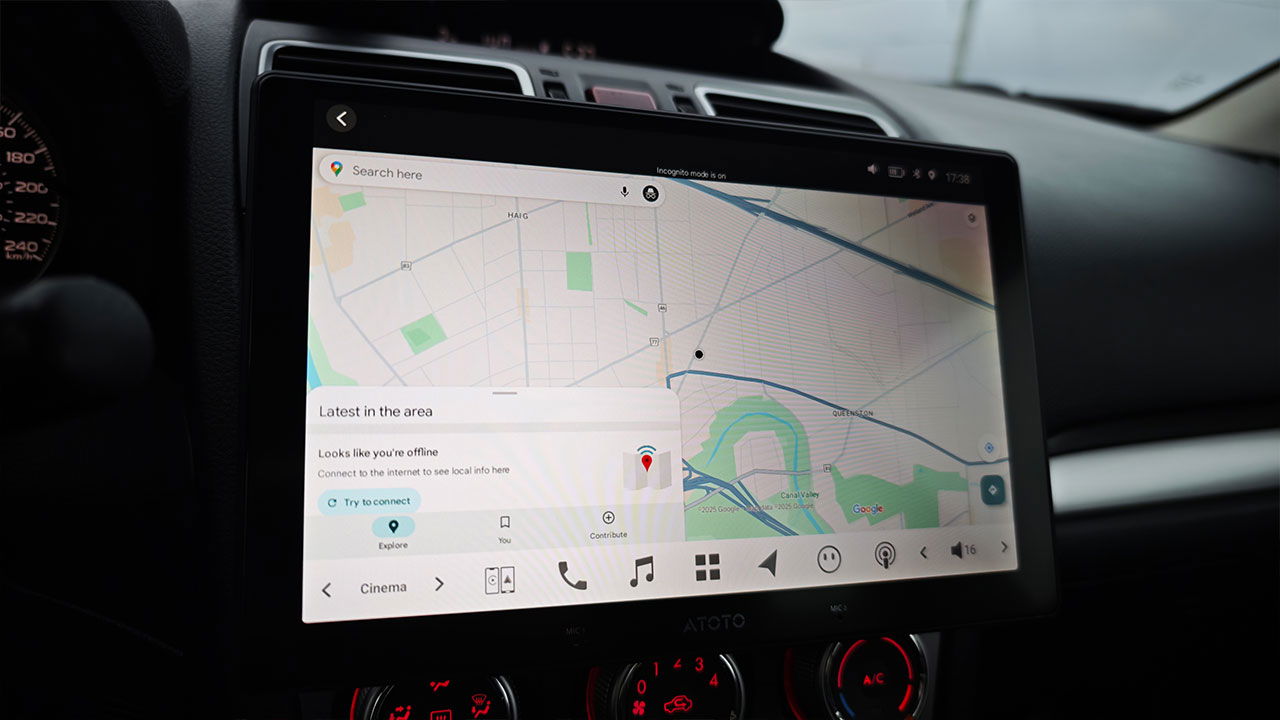
Beyond functionality, the overall fit and finish of the unit—from the hardware design to the interface—feels solid. The X10 looks more modern than many head units on the market, and its expandable 10-inch display gives a car’s dashboard a more polished and high-tech feel, especially for vehicles with aging infotainment systems. ATOTO has built a unit that is easy to install yet maintains a premium aesthetic, making it a standout option in the aftermarket space.
When all is said and done, the ATOTO X10 excels in balancing robust performance with a user-friendly interface. The device’s fast boot times, fluid transitions, and the strength of its wireless CarPlay and Android Auto set it ahead of much of the competition. Additionally, its generous memory allotment allows for a wide array of apps, from Netflix to advanced car diagnostic tools, to coexist. The integrated SPDIF port is a welcome addition for those serious about piping high-quality digital signals to an external amplifier. And next-generation features like DriveChat, if refined through firmware updates, could eventually present a compelling alternative to smartphone-based assistants.
The ATOTO X10 delivers a modern infotainment experience and serves as a strong alternative to pricier OEM setups. While it still has a few rough edges, ongoing updates enhance the overall experience, making it a top-tier addition to any car. It may be on the pricier side of third-party options, but it provides a truly modern, high-quality audio system that integrates seamlessly into most vehicles—and best of all, it’s easy to use. If you’re in the market for a new head unit, the ATOTO X10 may well be worth the extra investment, offering an experience that budget options simply can’t match.
If you want to pick up the ATOTO X10, you can use our discount code (T62IILZ2) to save 8% on your purchase from Amazon. You can also pick it up directly from ATOTO and use the code (ATOCGM) to save 8%.
- Powerful Performance: QCM SD665 SoC with 8GB+128GB offers snappy response. Enjoy effortless app launches, multi-tasking, wireless CarPlay/Android Auto/MirrorLink, and future-proof firmware upgrades on a refined, custom AICE 13 UI
- 10.1″ QLED Floating Display: QLED panel at 550 nits and strong light suppression coating. Adjust height, tilt, and angle for clear visuals in any car. Crisp 1280×720 resolution elevates navigation, video, and app experiences
